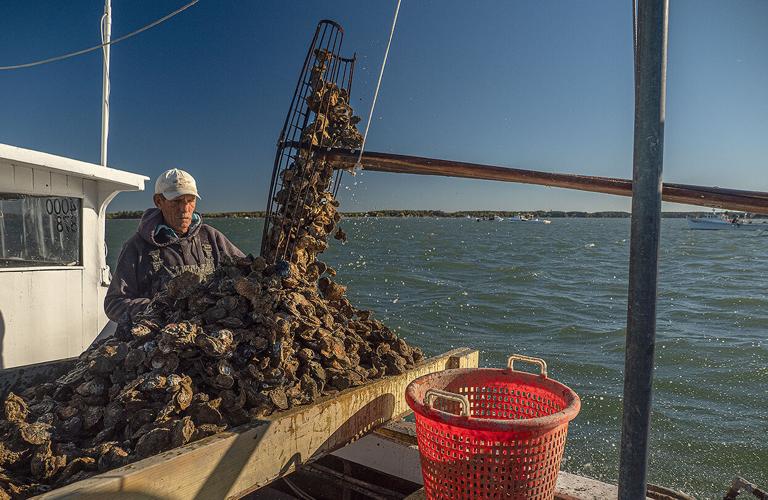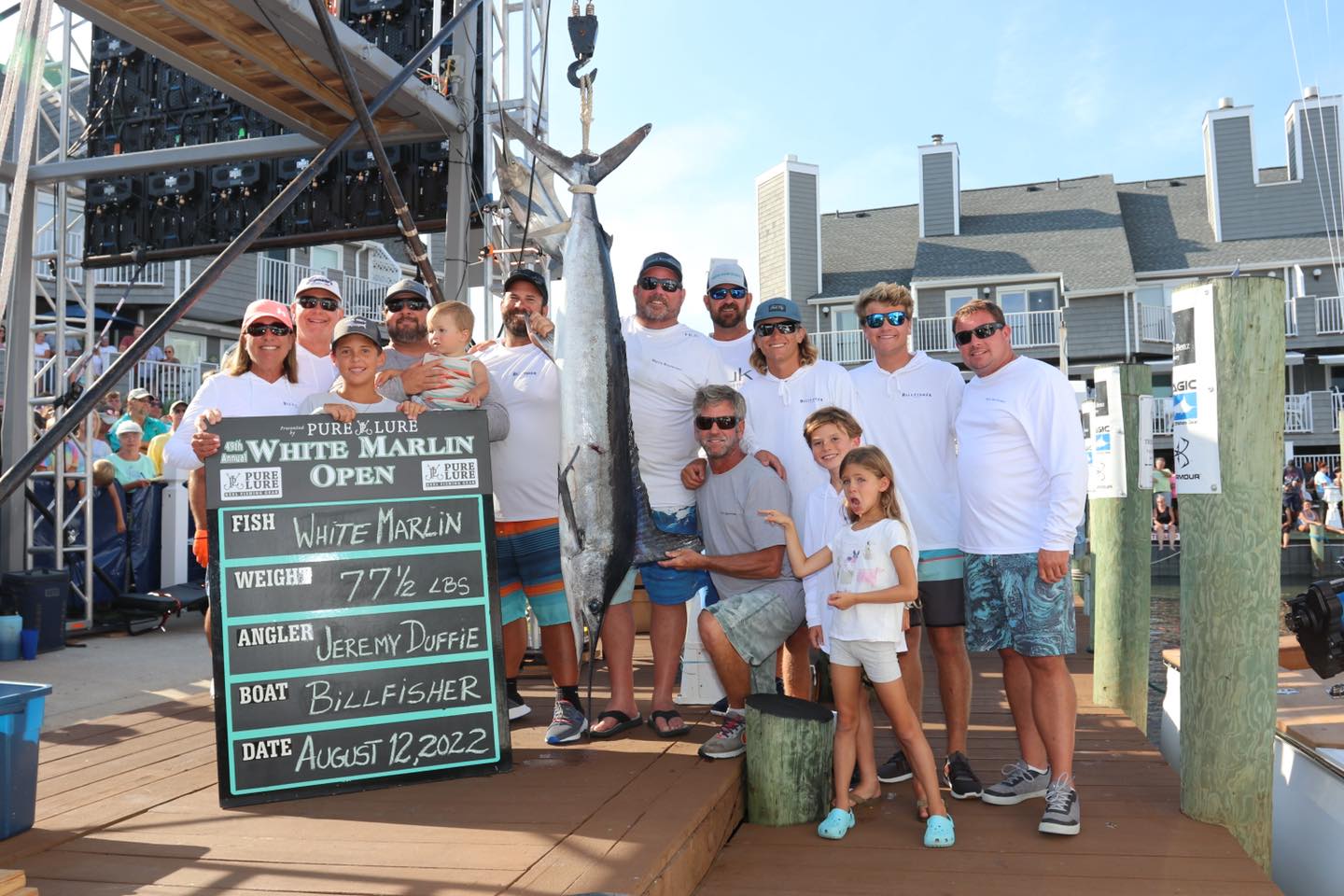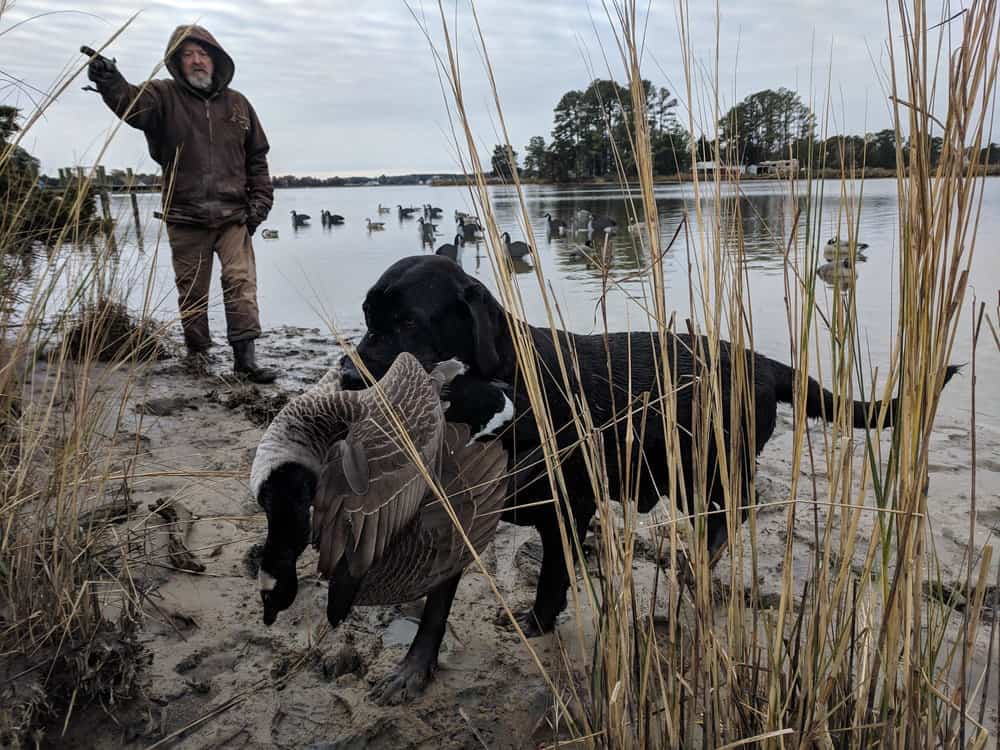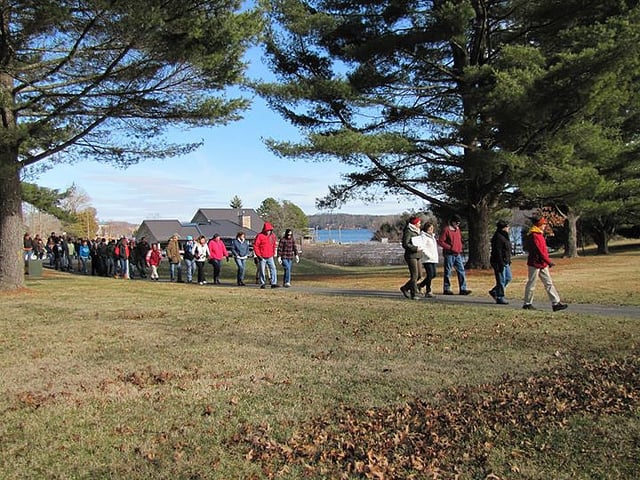By Timothy Wheeler, Bay Journal News Service
The Chesapeake Bay’s oyster industry has been on a roll recently, and last season Maryland watermen hauled in their biggest harvest in 36 years—623,000 bushels. After an “exceptional” crop of juvenile oysters spawned in 2020 and better than average reproduction since then, the state’s annual reef survey last fall found the third greatest abundance of bivalves in the last three decades.
Yet state fisheries regulators say they see clouds on the horizon, like a sizable increase in harvest effort and overfishing in areas of the Bay and its tributaries that harbor the most oysters. As a result, the Department of Natural Resources (DNR) might impose new harvest restrictions in the second half of the upcoming season, which begins Oct. 1 and normally lasts until March 31.
“We are making really good progress with oysters, and as an agency we’re just tickled that we have these big harvests,” said Lynn Fegley, DNR’s acting fisheries director. “But we also are starting to see in certain areas…that harvest rate is going up quicker than abundance.”
Though DNR plans no changes in harvest rules for the first three months of the season, it informed its Oyster Advisory Commission June 6 that changes were possible in January. Depending on what its reef survey finds this fall, DNR said it may close the season a month early—either statewide or in those areas with the heaviest harvest pressure—to boats using the most efficient gear. Or, alternatively, it may leave the season length unchanged but reduce the daily permitted catch for that gear the last three months by roughly 20 percent.
DNR is seeking industry input and public comment on its options by June 20, with plans to publish its final decision in a public notice by July 1.
Such mid-season tweaks are new for Maryland, where oyster regulations traditionally are set on an annual basis. It’s an unwelcome shift for watermen, who amid such bounty were counting on no changes at all — and some even hoped to see a return to higher catch limits of the past.
“Everything is going right. Why do we have to change it?” asked Robert T. Brown Sr., president of the Maryland Waterman’s Association. He insisted that the fishery is sustainable and disputed DNR’s assessment that overfishing has been occurring.
DNR told the advisory commission that neither the oysters nor the harvest pressure is evenly distributed. The bulk of the bivalves are in just two areas, the Choptank River and Tangier Sound, and 60 percent of the harvest came from Tangier Sound and the lower Patuxent River. Nine out of 36 areas open to public harvest experienced overfishing last season, according to DNR, including Tangier, the lower Patuxent and the St. Marys River.
The oyster population is not in jeopardy of imminent collapse, Fegley said. But at the current harvest rate, the state’s bivalves could decline again over time, especially if there’s another outbreak of Dermo and MSX.
Those diseases, triggered by a weather-driven rise in salinity of the Chesapeake Bay, erupted in the mid-1980s, causing widespread oyster die-off.
With the rebound in oyster abundance and harvests, more watermen are getting back into the fishery. Last year, more than 1,400 paid the state surcharge required to harvest oysters, the highest in the past 30 years. Most harvesters caught their limit up until the end of the season on March 31, and the dockside value of their harvest reached about $27 million, the highest in the last three decades.
What worries regulators is that the harvest pressure could increase still more. Only half of the waterman eligible to harvest oysters paid the surcharge last year, so their ranks could conceivably double.
“We want to work toward continued improvement of oyster abundance and habitat,” Fegley said. “To keep that going you’ve just got to balance the harvest rate.”
To determine whether harvest curbs are warranted, Fegley said the department will evaluate preliminary results from its annual survey, which uses a dredge to sample more than 250 reefs in October and November. State biologists will check to see how many young oysters there are and how many newly spawned “spat” were produced over the summer. They’ll also look for MSX and Dermo infection and mortality.
If the survey indicates problems, DNR is considering three different options for curtailing the harvest, which would be imposed by Jan. 15, 2024. Fegley said there are pros and cons to each option. Closing all Maryland waters early would penalize watermen working areas that are not experiencing overfishing, she said, but closing only certain areas could prompt watermen to shift their effort and concentrate harvest in areas left open.
The state’s plan drew praise from the Chesapeake Bay Foundation. Allison Colden, a fisheries biologist and the foundation’s Maryland executive director, warned that without adequate controls on fishing effort, increased harvests could contribute to declines in the population when conditions in the Bay affect oyster reproduction.
“We are encouraged that DNR has proposed a more responsive approach to oyster management, based on the fall dredge survey,” Colden said, “and urge them to consider further regulations that aim to end overfishing in the regions where it is occurring.”
Fegley acknowledged, though, that watermen aren’t happy with the prospect of harvest restrictions.
“I think the oyster industry was really hoping to see some liberalization, which frankly in some areas we could do,” she said. “The problem that we have is we … can’t have one bushel limit in one area and a separate bushel limit in another area. We can’t enforce that. It’s just impractical.”
“Basically, the watermen are saying, ‘We don’t like any of it, leave us alone,’” said Jeff Harrison, president of the Talbot Watermen Association. “We’re doing better than we have in 37 years.” There might be a few areas where concentrated harvest exceeds natural reproduction, he added, but those will take care of themselves, because watermen will move somewhere else when the harvest tails off.
You can read this article in its entirety at bayjournal.com, where it was originally published June 15, 2023.




